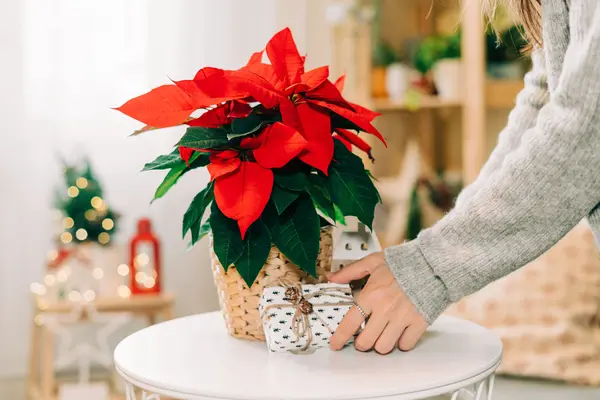Gardening
5 Reasons Your Poinsettia Is Struggling—And How to Save It

The poinsettia is a classic symbol of the holiday season, known for its vibrant red petals and large green leaves. However, when your poinsettia starts to wilt or turn brown, it can quickly lose its festive appeal. If you’re noticing these changes, don’t worry—your plant might just need a little extra attention. Experts explain the common reasons your poinsettia is struggling and offer tips on how to bring it back to life.
Initial Signs Your Poinsettia Needs Help
If your poinsettia is showing signs of distress, it’s crucial to act fast. Here are some early warning signs that something might be wrong with your plant:
- Yellowing or curling leaves
- Brown edges on leaves
- Drooping or wilting leaves
- Premature leaf drop
- Leggy, weak growth
“These symptoms typically indicate stress, often caused by improper watering, lighting, or temperature conditions,” says Andrew Connolly, founder of Little Flower Cottage. Donna Letier, co-founder and CEO of Gardenuity, advises that catching these signs early is key. “Happy plants communicate when they’re thriving, and noticing these early symptoms gives you a chance to intervene.”
Common Causes of Poinsettia Struggles
Underwatering
If your poinsettia’s leaves are wilting, crispy, or turning brown and the soil feels dry, it’s likely underwatered. To fix this, water your plant thoroughly and allow excess water to drain out. Going forward, check the soil moisture regularly. “Water when the top inch of soil feels dry,” says Connolly. If the edges of your plant’s leaves are brown, it may indicate dry air, so consider misting the plant or using a humidifier.
Overwatering
Overwatering can cause yellowing or falling leaves. When the roots are waterlogged, they can’t get enough oxygen, leading to root rot. Let the soil dry out before watering again, and ensure your plant sits in well-draining soil. Be cautious about wilting leaves, as they can be caused by either underwatering or root rot from overwatering.
Drafts and Temperature Fluctuations
Although poinsettias thrive in winter, they dislike drafts. “If your plant is near a drafty window or door, it can cause the leaves to brown or drop,” Letier says. To prevent this, keep your poinsettia in a stable, warm environment, ideally between 65–75 degrees Fahrenheit. Place it near bright, indirect sunlight, away from windows, doors, and heaters.
Heat Stress
Excessive heat or direct sunlight can cause leaf burn. While poinsettias love warmth, they should be kept out of direct sun. “Too much heat from a vent or direct light can damage the leaves,” Letier advises. Ensure your plant gets bright but indirect light for optimal health.
Insufficient Light
If your poinsettia appears leggy or weak, it’s not getting enough light. Move the plant closer to a bright window but avoid direct sunlight, which can lead to heat stress. Ensure your poinsettia has access to the right amount of light for healthy growth.
When to Let Go
In some cases, despite your best efforts, a poinsettia may not recover. “If the stems are mushy, black, or rotting at the base, it’s likely suffering from severe root rot or a fungal infection,” says Connolly. At this stage, it’s probably best to dispose of the plant and consider replacing it with a fresh one. However, with proper care, your poinsettia can thrive again—just remember to keep an eye out for those early signs of distress!
